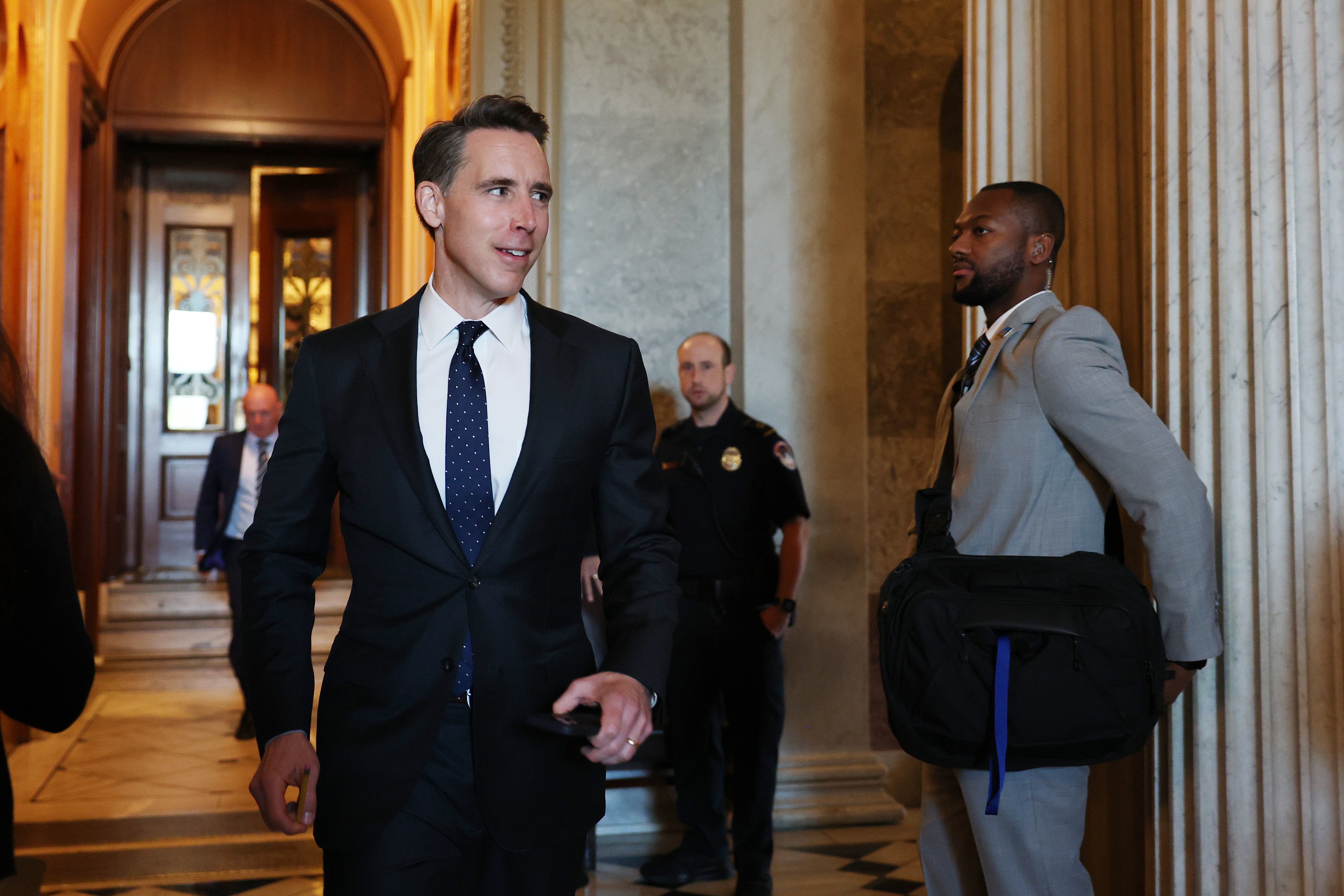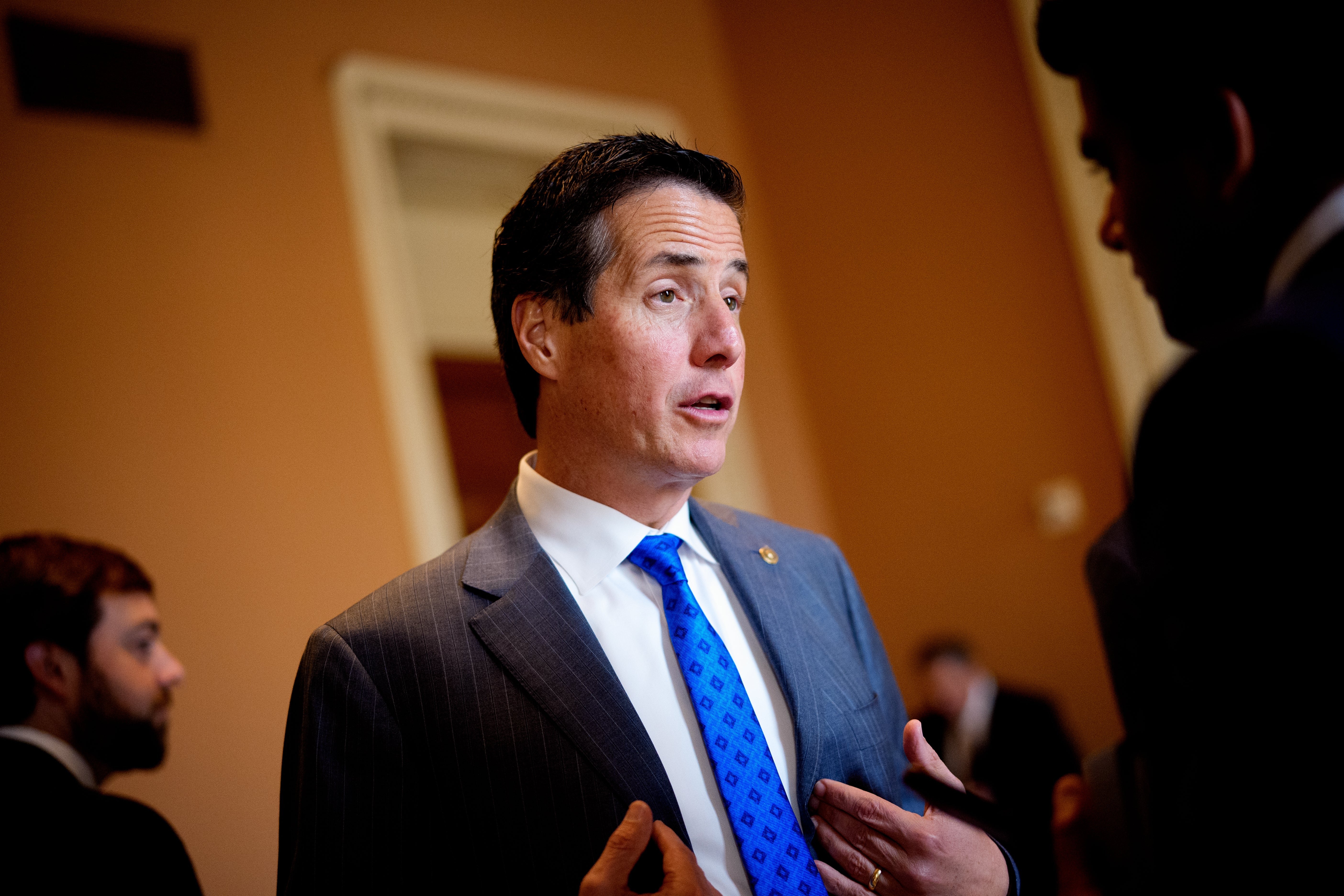As the government shutdown enters its 22nd day, some Republicans in both chambers are floating an idea few in their party had ever even entertained: getting rid of the legislative filibuster to bring an end to the morass.
In recent years, Democrats have floated changing the filibuster. Former senators Joe Manchin and Kyrsten Sinema blocked attempts to create a carveout to codify a new version of the Voting Rights Act. They hoped to do so again with abortion rights as the Supreme Court planned to overturn Roe v Wade in the Dobbs v Jackson decision, only to fail.
But now, some hard-right Republicans are floating the idea.

“My thought is, is that I’m not willing to see children in my state go hungry, which is literally happening now, over some Senate procedure,” Josh Hawley (R-Mo.) told The Independent.
Hawley came to the Senate in Donald Trump’s first presidency, after then-Senate Majority Leader Mitch McConnell torpedoed the filibuster for Supreme Court nominees.
But McConnell did so only after his predecessor, Democratic Senate Majority Leader Harry Reid, had invoked the “nuclear option” on the filibuster, the 60-vote threshold required to pass almost anything in the Senate, during Barack Obama’s presidency after Republicans repeatedly blocked Obama’s nominees.
The move had sweeping consequences: while Republican obstructionism had reached a fever pitch during Obama’s presidency, it meant that presidents no longer had to reach consensus choices. One could argue that Robert F. Kennedy Jr.’s control of the Health and Human Services Department, Kash Patel’s rule at the FBI, Pete Hegseth’s leadership at the Pentagon and, of course, Dobbs, date back to Reid’s choice.
But for young insurgents like Hawley, who came of age in the Trump era, it’s just one last vestige of the old guard that must be tossed to the dustbin.

“If it lasts too much longer, that’s something to think about,” Sen. Bernie Moreno (R-Ohio) told The Independent Sen. Bernie Moreno (R-Ohio) told The Independent. “One thing you could do is have it be 55, and the rules would be, you can’t raise spending or taxes, yeah, so put some guardrails around it, but I don’t think we’re there to have that conversation.”
Moreno, a freshman who won just last year and is a committed ally of the president, said it hinges on whether Democrats vote on Thursday to pay federal workers.
He’s not alone. Unsurprisingly, Republicans in the House of Representatives floated the idea. Rep. Chip Roy (R-Texas) told reporters on Monday that Republicans should get rid of the filibuster for continuing resolutions. There is some irony, of course, in Roy proposing this, given he was Sen. Ted Cruz’s chief of staff when Cruz shut down the government in 2013 to defund the Affordable Care Act.
But in the same way that Democrats’ nuclear option had long-lasting effects that ultimately empowered Trump, a carve-out for continuing resolutions would all but kill the appropriations process.
It would mean that the majority party would simply pass continuing resolutions instead of working in a bipartisan manner on the 12 spending bills needed to fund the government for a full fiscal year. And given that Democrats are more comfortable with higher spending levels, they would have every reason to keep toplines at the same amount of money if they took back the Senate, killing any chances Republicans like Roy have of fiscal restraint.

This is probably why Roy’s former boss, Sen. John Cornyn (R-Texas), brushed off Roy’s remarks.
“Is Chip in the Senate?” he asked The Independent.
“The House is not the Senate, and the Senate’s not the House, and it needs to be someplace where there’s adequate debate and deliberation, and that would be the United States Senate,” Cornyn said. “And the truth is, it’s bad for the country, because we can’t change policies every two years when a new majority wins an election. So it may be expedient, but it’s a bad idea.”
Other Republicans like Sen. James Lankford (R-Okla.) warned of a slippery slope.
“You do the first time, you do the second time, you do the third time,” he told The Independent. “You start declaring which one is important. Legislative filibuster is there to force people to be able to sit down and talk.”
McConnell understood this deeply, which is why he attempted to preserve the filibuster after he removed it for Supreme Court nominees, despite Trump wanting him to remove it after Republicans failed to repeal the Affordable Care Act.
But McConnell left his perch atop the Senate GOP last year. Though his successor and protege, John Thune, supports it, he might have a tougher time standing in the breech. And all it takes is Trump making the call in a late-night Truth Social post.
The filibuster is already on its last legs after Reid killed it for nominations. It suffered another body blow when both parties resorted to passing policy priorities through budget reconciliation, even though neither has used it to reduce the deficit.
For the longest time, Republicans hoped the Democrats would kill it so they could play the blame game. But a government shutdown might be the final knife in the stomach for the procedure that keeps the Senate from turning into the meat grinder that is the House.





)